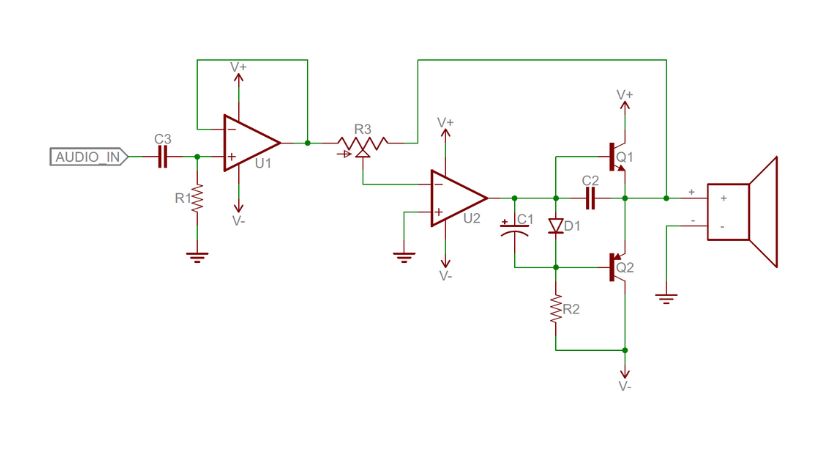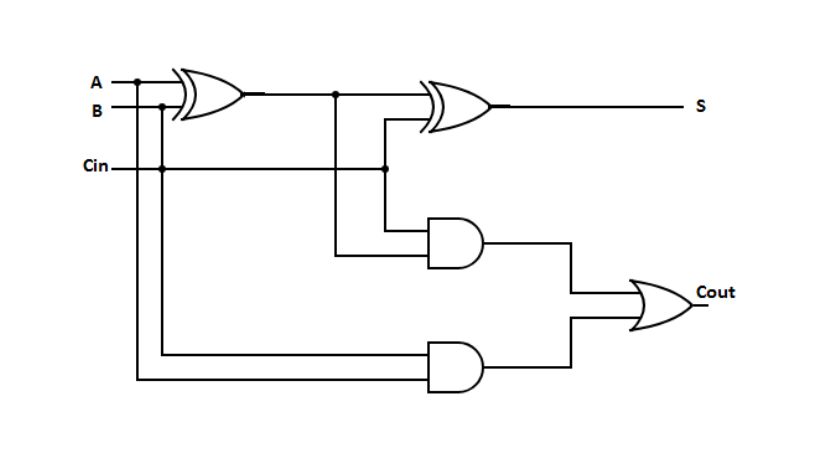Electronic circuits are simply the combination of various electronic components connected in a specific way to perform a task. There are various electronic circuits, but analog and digital circuits are the two main types.
An Analog circuit is a type of circuit that processes analog signals or data and gives analog output. The components like resistors, capacitors, transistors, and diodes are used in analog circuits. On the other hand, digital circuits process digital signals and give digital output. The digital circuit is composed of logic gates and at the higher level, it consists of microprocessors and processors.
In the rest of the article, I will explain in detail the types of electronic circuits, especially analog and digital circuits, and discuss their differences.
Types of electronic circuits
For the functionality of different electronic devices, the electronic circuit is fundamental.
Have you ever opened any electronic device or a small toy? If yes then you may have noticed a green board in it. This green board is an electronic circuit board.
If you see this green board has electrical components like resistors, capacitors, inductors, transforms, and relays, and along with these, there are some electronic components such as diodes, transistors, and LEDs.
All these components are arranged in a specific manner and they perform specific tasks.
We arrange different components to make toys and various devices. Electronic circuits have various types so to understand the basics of electronics you have to know different circuit types.
If you want to learn more about electronic circuits, see our article
Broadly electronic circuits can be classified into two main categories: Analog and Digital circuits.
Let’s discuss both types in detail.
1. Analog circuit
An Analog circuit is a type of signal that process any analog signal. The analog signal is continuous and can take any value within a certain range.
They represent physical quantities such as voltage or current that vary smoothly over time.
Often, the output of an analog circuit is directly proportional to the input. For example, in an amplifier, a small increase in input signal causes a proportional increase in output.

For example, a microphone converts sound waves into a continuous signal, and the audio signal is continuous. The analog circuit is then processed and amplified to drive speakers.
Characteristics
Here are some characteristics of analog circuits.
- The analog circuits processed continuous signals. The voltage, current, and power values change smoothly over time.
- Since analog signals can take any value, they are more prone to degradation and distortion from external noise and interference.
- Many analog circuits exhibit linear behavior, meaning that the output is directly proportional to the input. This property is essential in amplification.
- Analog circuits can be more power-efficient in low-frequency applications but may also require efficient heat dissipation in high-power applications due to continuous current flow.
Components
The components used in analog circuits can be of two types: active and passive components.
Active components in electronic circuits are crucial elements that possess the ability to control and amplify electrical signals.
The passive components only receive the energy, which they can either dissipate, absorb, or store in an electric field or a magnetic field.
The transistor and diodes are examples of active components and resistors, capacitors and inductors are examples of passive components.
The above circuit is a simple analog circuit that consists of op-amps (operational amplifiers), op-amps contain transistors. Apart from op-amps, it has resistors and capacitors. This is an amplifier circuit that amplifies the input signal.
Advantage
The use of continuous signals in analog circuits makes them a valuable technology in a large number of applications. Analog circuits use voltage and current that vary continuously with time.
- Continuous signal use makes the analog circuit more accurate because of a continuous signal. So these types of circuits are ideal for applications where precision is needed.
- Another advantage of analog circuits is responsiveness, to the change in input signal these circuits change output rapidly. Because of this, it can be a good option to be used in audio processing and TV transmission.
Applications
The analog circuits have lots of applications due to their accuracy and rapid response. Here are some applications of analog circuits.
- Analog circuits play a crucial role in audio processing, from capturing sound to delivering it through speakers.
- They are fundamental in communication systems, where information is transmitted through continuous signals.
- Medical devices such as ECG, and blood pressure monitor for monitoring and diagnostic purposes extensively use analog circuits.
- Power supplies, inverters, motor control systems, and battery charging circuits use analog components to ensure stable and controlled power delivery.
These are some applications of analog circuits in capturing, processing, and controlling continuous signals, making them indispensable in a wide range of electronic systems and devices.
2. Digital circuits
An electronic circuit that processes digital signals is called a digital circuit. Digital signals are those that are a discrete function of time.

Every digital circuit operates on binary digital signaling or boolean logic, which represents the status signal—that is, ON or OFF—using just two voltage levels.
Characteristic
Let’s talk about the characteristics of digital circuits.
- Digital circuits work with distinct voltage levels, typically representing binary ‘0’ and ‘1’, allowing for precise signal representation and reducing ambiguity.
- The digital signals are less susceptible to noise so it also makes the digital circuits reliable.
- Many digital circuits can be programmed or configured to perform specific functions, offering flexibility in design and application.
- Digital circuits can be easily scaled to increase complexity or functionality.
Components
The main component of digital circuits is logic gates. The logic gates and transistors are used in digital circuits at low levels and microprocessors and processors are used at higher levels.
The digital circuits operate on digital signals and all the real-world signals are analog so they need to be converted into digital signals using a special electronic circuit known as ADC (Analog to Digital Converter).
The same for output, it will be converted back to analog by using DAC (Digital to Analog converter).
Random-access memory (RAM) and read-only memory (ROM), these components store data and instructions for digital systems.
The above circuit is a digital circuit as you can see it is constructed using AND Gates, NOR Gates, Inverters, Flip-flops, and buffers. This is the internal structure of CD4017 IC.
Advantages
Digital circuits offer numerous advantages over analog circuits. Let’s discuss the advantages of digital circuits.
- As compared to analog circuitry, the output is more accurate. This is so that there is no need to estimate the level because the signal levels in a digital circuit are discrete.
- The excellent noise immunity of digital circuits is one of their main benefits. This implies that even in challenging conditions, they can generate a more accurate representation of a signal.
- Another benefit of digital circuits over analog circuits is that they are simpler to design and troubleshoot. This is because an analog circuit’s circuitry is usually far more complex than that of a digital circuit.
- The digital circuits require less power.
These are the benefits of using digital circuits.
Applications
Because digital circuits can analyze and alter discrete signals represented by binary code, they are used in a wide variety of industries. The following are a few important uses for digital circuits:
- Due to the lower power requirements, digital circuits are used for applications where low power consumption is required, such as in circuit boards for portable electronic devices.
- Digital circuits are used in microcontrollers because it is easy to design and debug.
- The fact that digital circuits are more durable. For this reason, digital circuits are frequently chosen in applications like control systems where a high level of reliability is necessary.
- It is also used in communication systems as the digital circuits provide accurate readings.
Analog vs. digital circuits
Analog and digital circuits have a lot of differences and it is important for a beginner to know about them.
Now in this section, we’ll explain the difference between both types of electronic circuits.
| Analog Circuits | Digital Circuits |
| The circuits that process analog signals are called analog circuits. | The circuits that process digital circuits are called digital circuits. |
| The input signal of an analog circuit is always a continuous-time signal. | The input signal of the digital circuit is always a discrete-time signal. |
| Analog circuits produce output in the form of analog signals. | The output of digital circuits is a digital signal. |
| The signal converters are not required while working with analog circuits. | Digital circuits need signal converters such as ADC and DAC. |
| Noise can affect analog signals more easily. | Noise does not affect digital signals. |
| The analog circuits are complex to design. | Digital circuits are relatively easier to design. |
| The processing speed of these types of circuits is slow. | Digital circuits offer high processing speed as compared to analog circuits. |
| They require more power for operation. | They require less power for operation. |
| These circuits are less accurate and reliable. | These types of circuits are more accurate and reliable. |
| Analog circuits store information in the form of waves. | Digital circuits store information in binary form. |
| The logical processes cannot be carried out effectively by the analog circuit. | Logical operations are performed effectively by digital circuits. |
Conclusion
An analog and digital design is the cornerstone upon which the vast field of electronic circuits is constructed.
For engineers, hobbyists, and tech fans alike, comprehending these circuit types is crucial, whether it’s for the smooth amplification of analog signals or the accurate processing of digital information.
Analog and digital circuits are the two main types of electronic circuits, and both are responsible for the functionality of various electronic devices.
The analog circuit is the type of circuit that processes analog signals or continuous-time signals. The operation amplifier (op-amps), transistors, resistors, capacitors, and inductors are the components that are used in analog circuits.
Digital circuit on the other hand is the type of circuit that processes digital signal or discrete-time signal. The logical gates are the building blocks of the digital circuits.
Both types of electronic circuits are important, in some applications, analog circuits will work more efficiently than digital and vice versa.
That was all about types of electronic circuits, I hope you will find it helpful.
Thank you…
Other useful posts:
